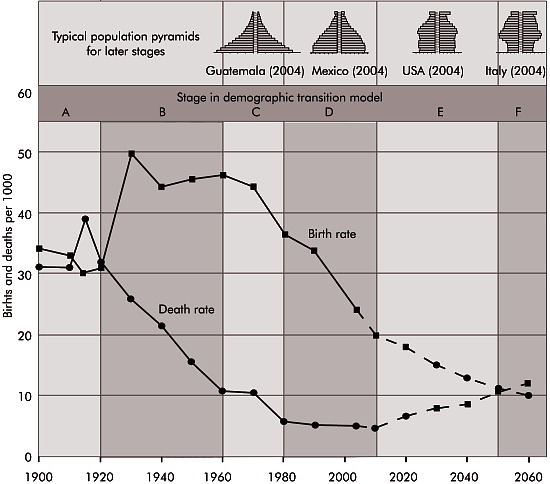The National Statistics Institute (INEGI) has released population updates to coincide with today’s celebration of World Population Day (11 July). According to INEGI, Mexico currently has 118.4 million people, and is the 11th most populous country in the world.
The total world population is estimated at 7.2 billion, with slightly over half that number living in one of just 6 countries: China, India, USA, Indonesia, Brazil and Pakistan. The total fertility rate (globally) fell from 3.04 children/woman (1990-1995) to 2.53 children/woman (2005-2010). In 2010, the global life expectancy stood at 68.7 years.
Projections made by Mexico’s National Population Council (CONAPO) put Mexico’s 2013 fertility rate at just 2.2 children/woman, while life expectancy has risen (slightly) to 74.5 years. The reduction of fertility rate in Mexico is occurring in a society where the average level of schooling is increasing and where women report greater economic, social and political participation.
Between 1990 and 2011, maternal mortality in Mexico was reduced by 51.5%. Infant mortality over that period also fell, from 88 to 43 deaths/100,000 live births.
The percentage of the population that is aged 30 to 59 years increased between 1990 and 2011 from 25.5 to 35.7 %, while the percentage aged 60 and older rose from 6.2 to 9.5%. The proportion of Mexico’s population that is aged 60 and older is expected to continue rising and is predicted to reach 14.8% of the total population in 2030 and 21.5% in 2050.
INEGI also reported that the four leading causes of death among Mexicans are:
- Diabetes mellitus (14.1% of all deaths)
- Ischaemic heart disease (12.3%)
- Liver diseases (5.5%)
- Cerebrovascular diseases (5.3%)
Taken together, these four diseases, classified as chronic degenerative diseases, account for 37.2% of all deaths. Clearly while life expectancy in Mexico is increasing, it is accompanied by higher levels of obesity and physical inactivity. This will place a massive strain on health care budgets in the future.
Related posts:
- Mexico’s population expected to peak at about 138 million
- Mexico’s population is aging fast
- Mexico’s population pyramid (age-sex diagram) for 2010
- The average size of households in Mexico in 2010
- Map of population change in Mexico, 2000-2010
- Is Mexico experiencing a demographic dividend?
- Mexico’s position among the most populous countries to 2100
